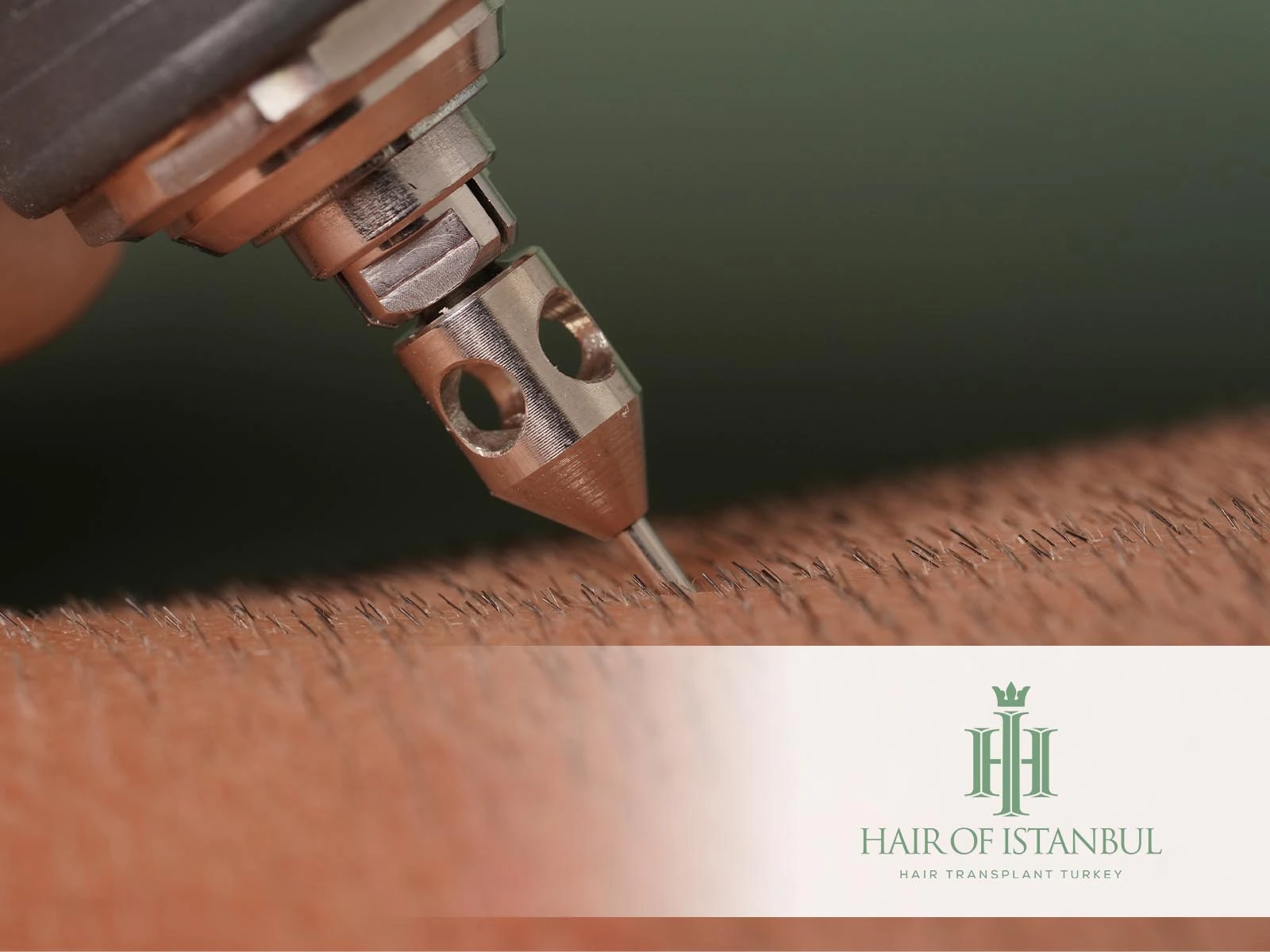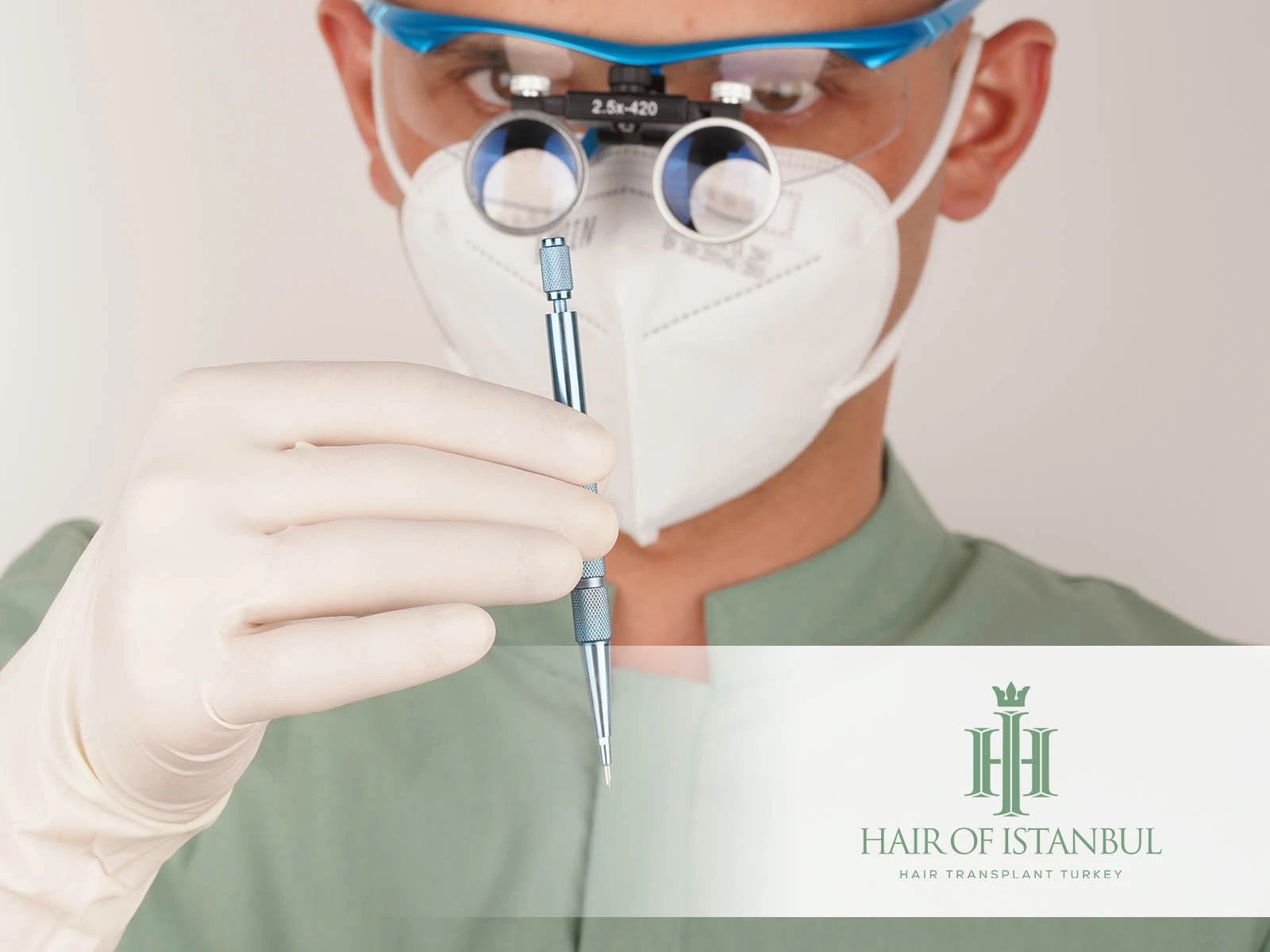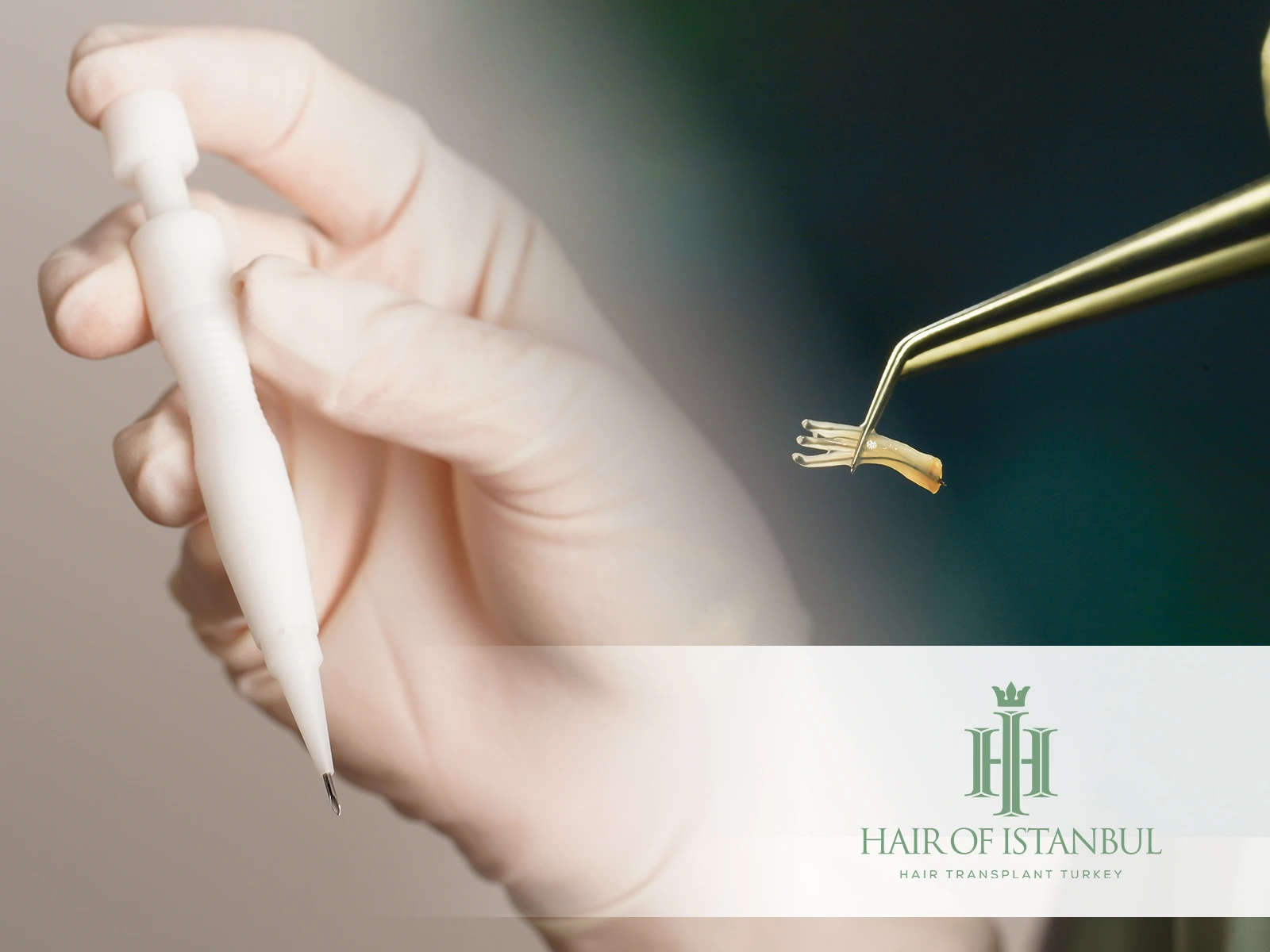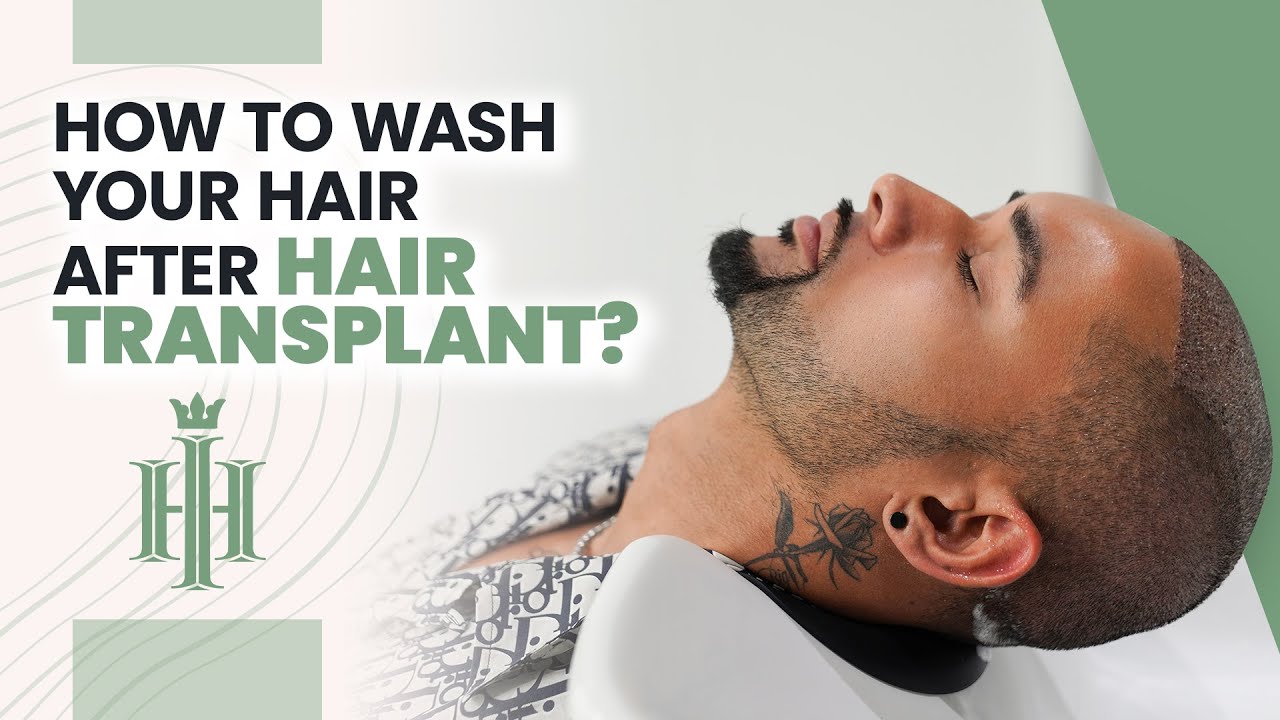HAIR TRANSPLANT
Hair transplant; is the transplantation of healthy hair follicles (follicular units) from the donor area to regions that are sparse or bald. At Hair of Istanbul, individuals aged 18 to 60 who have sufficient and healthy donor reserves and experience hair loss due to genetic, hormonal, or stress related reasons—or who naturally have a broader/high forehead—are considered suitable candidates. Before every operation, a comprehensive medical evaluation is performed, including donor area analysis and personalized hairline planning, so the correct indication is established and aligned with the patient’s expectations.
During the procedure, healthy hair follicles are typically harvested from the nape (safe donor zone) and transplanted to areas affected by hair loss using advanced microsurgical techniques. All procedures are carried out in a sterile clinical setting authorized by the Ministry of Health, by specialist physicians and an experienced medical team, in accordance with international safety standards.
The hairline is designed with attention to facial proportions, age, and hair type. Depending on the patient’s needs, grafts are extracted using the FUE technique; implantation is performed with DHI, Sapphire, or SLIT methods. These techniques are used as complementary approaches and provide high precision, natural hair-direction harmony, and a comfortable recovery process.
Follicles taken from the donor area are resistant to shedding, which supports natural and long-lasting hair growth. With meticulous planning and careful post-operative follow-up, hair transplantation offers a safe, effective, and permanent solution, delivering a denser, natural, and well-balanced appearance.
The process is not limited to the operation itself. During the post-operative period, Hair of Istanbul provides clear instructions on washing, medication use, sleeping position, and returning to activities. This comprehensive approach ensures smooth healing and naturally aesthetic results.
Pre-Hair Transplant Planning
At Hair of Istanbul, the hair transplant journey begins before you arrive in Türkiye. Our expert team conducts an online preliminary assessment based on your photos and creates a personalized plan in line with your hair loss pattern, donor capacity, and target expectations. According to your flight dates, we organize appointment scheduling, 5-star hotel reservations, and airport–hotel–clinic transfers. Throughout the entire process, a representative who speaks your native language accompanies you.
On the day of the operation, you will have a face-to-face consultation with your doctor; a detailed hair analysis is performed, and a natural-looking hairline suitable for your facial contours is designed. Necessary medical checks and blood tests, including ECG, are completed by a cardiologist and an anesthesiologist; your current medications and allergies are reviewed with physician approval.
Pre-operative information and consent forms are shared in your native language; the surgery-day flow, recovery timeline, and expected outcomes are communicated transparently.
In summary, at Hair of Istanbul, the pre-transplant phase is managed end-to-end with principles of patient safety and individualized planning—from remote preliminary assessment to in-person planning in Istanbul, from hotel and transfer arrangements to cardiology/anesthesia clearances and informed consent in your native language. While you simply follow a schedule that suits you, all logistical and medical preparations are coordinated by our teams according to our standard protocols.

Patient Relations
At Hair of Istanbul, before a hair transplant appointment is scheduled, specialists evaluate both the areas of thinning and the donor region. Once your reservation is confirmed, your dedicated representative will share all the information you may need prior to the operation.

Hotel & Transfers
After your reservation, all transfers are arranged with VIP vehicles. Airport–hotel–clinic transportation is provided, along with accommodation at a 5-star sea-view hotel. Hair of Istanbul consultants are by your side 24/7 at every stage of the process.

Pre-Op Precautions
Avoid alcohol for 1 week before the operation and reduce smoking.You may have breakfast on the day of surgery.If you are taking any medications, or if you have scalp conditions such as rash or dermatitis, be sure to inform your representative in advance.
Hairline Design
A natural-looking hair transplant is built on a hairline designed in harmony with the face’s anatomical proportions and the patient’s lifelong hair-loss dynamics. The goal is to create a frame that looks “native,” not “implanted,” at first glance—and that does not appear artificial as the patient ages.
Facial Proportions & Key Landmarks: Using the glabella, nasal root, lateral canthus, and tragus as references, the height and arc of the hairline are determined. “One size does not fit all”; the forehead-to-face ratio is optimized for the individual.
Age Appropriateness: An overly juvenile (low) hairline can look artificial over time. The plan should be sustainable, anticipating potential future hair loss.
Facial Surface Mapping: The anterior hairline height, temporal recess depth, forehead width, and symmetry are evaluated.
Choosing the Hairline Type: Mild M-shape, straight–soft arc, or a mature male hairline; in female patients, a more oval/rounded frame.
Special Cases
Afro Hair Type: Due to curved follicular directions and skin–vascular anatomy, the hairline is planned with a more “straight-line” approach.
Female Hair Transplant: Temporal framing and parting lines are crucial; the hairline is more oval, and micro-irregularity is kept more minimal.
Secondary/Revision Cases: Old, straight, barbered-looking hairlines are corrected with “softening” tactics using fine, single-hair grafts.
High Forehead / Advanced Norwood: If donor supply is limited, prioritize a mature hairline and frontal–midscalp density; the crown (vertex) may be deferred to a second stage.
Common Mistakes
- Not using enough single-hair grafts in the frontal band.
- Placing the hairline too low (leading to long-term graft waste and an artificial look).
A successful hairline design relies on applying facial-proportion analysis, age appropriateness, donor economics, and micro-irregularity principles together. With the right graft architecture and technique combination (single-hair grafts in the frontal band, stepped density, correct angle–direction–depth), the result appears natural at first glance and remains sustainable in the long term.

Graft Harvesting with the FUE Technique
One of the critical stages of a hair transplant operation is the correct harvesting of grafts. The follicles should be excised together with their surrounding tissue, and the micromotor must not damage the grafts during this process. This procedure is known as FUE (Follicular Unit Excision) and should be performed only by experienced specialists.

Channel Opening (Sapphire – Slit)
Just as important as hairline design and graft harvesting, channel opening is a critical stage that determines the outcome of a hair transplant. Hair emerges at natural angles. The HOI medical team creates micro-channels that match these native angles using sapphire or slit instruments, ensuring a natural and aesthetic appearance.

Implantation
In the implantation phase, sorted grafts are placed atraumatically into micro-channels that match the natural hair direction and angles—single-hair grafts in the frontal band for a soft, natural hairline, and multi-hair grafts behind for volume. Depth is standardized, with strict attention to tissue respect and symmetry.
POST-OPERATIVE
Immediately after a hair transplant, both the transplanted area and the donor site become quite sensitive. At the same time, because fluids from the local anesthesia are still present in the body, making sudden movements, bending over, or hitting your head during the first 3 days can cause the grafts to shift and negatively affect the success of the operation. Therefore, it is strongly recommended to sleep in a semi-upright position using a travel pillow for the first 3 nights. This position both reduces swelling and protects the transplanted area. The Hair of Istanbul team shares every detail you need to spend the first 3 days smoothly and safely after the operation and remains on call 24/7 for possible emergencies. During this period, strictly following the guidance of your doctor and patient consultant forms the basis of a successful recovery process.

POST-TRANSPLANT HAIR WASHING
FUE hair transplant recovery begins immediately after the procedure. Typically, your first wash is performed by the Hair of Istanbul team within 48–72 hours. After this initial session, you continue with daily washing for approximately 7–9 days using the products provided to you and exactly as demonstrated. On the 10th day, a controlled scab-shedding process is carried out. Once this stage is completed, your scalp recovers, and you can return to your normal life and usual washing routine.

POST-HAIR TRANSPLANT CARE PRODUCTS
Hair of Istanbul uses special products selected by experts—in collaboration with Kerastase—to help hair grow healthier, stronger, and faster after a hair transplant. When needed, personalized care sets are prepared and, before you leave our clinic, delivered to you by our patient consultants; detailed usage instructions and application frequency are explained carefully. In this way, nourishment of the hair follicles throughout recovery and their longevity is maximized.

POST-HAIR TRANSPLANT FOLLOW-UP
After a hair transplant, initial hair growth typically occurs within 9–12 months, while the final appearance is usually achieved between 13–15 months. Throughout this recovery period, the Hair of Istanbul team keeps you informed regularly and closely monitors each stage of your progress.To achieve the best results, we recommend sharing your photos with us every month so they can be reviewed by our doctors. This way, the progress of your transplant is tracked with objective clinical data, and personalized guidance can be provided whenever needed.
 en
en  TR
TR  SK
SK  ITA
ITA  FR
FR  DE
DE  ES
ES  BG
BG